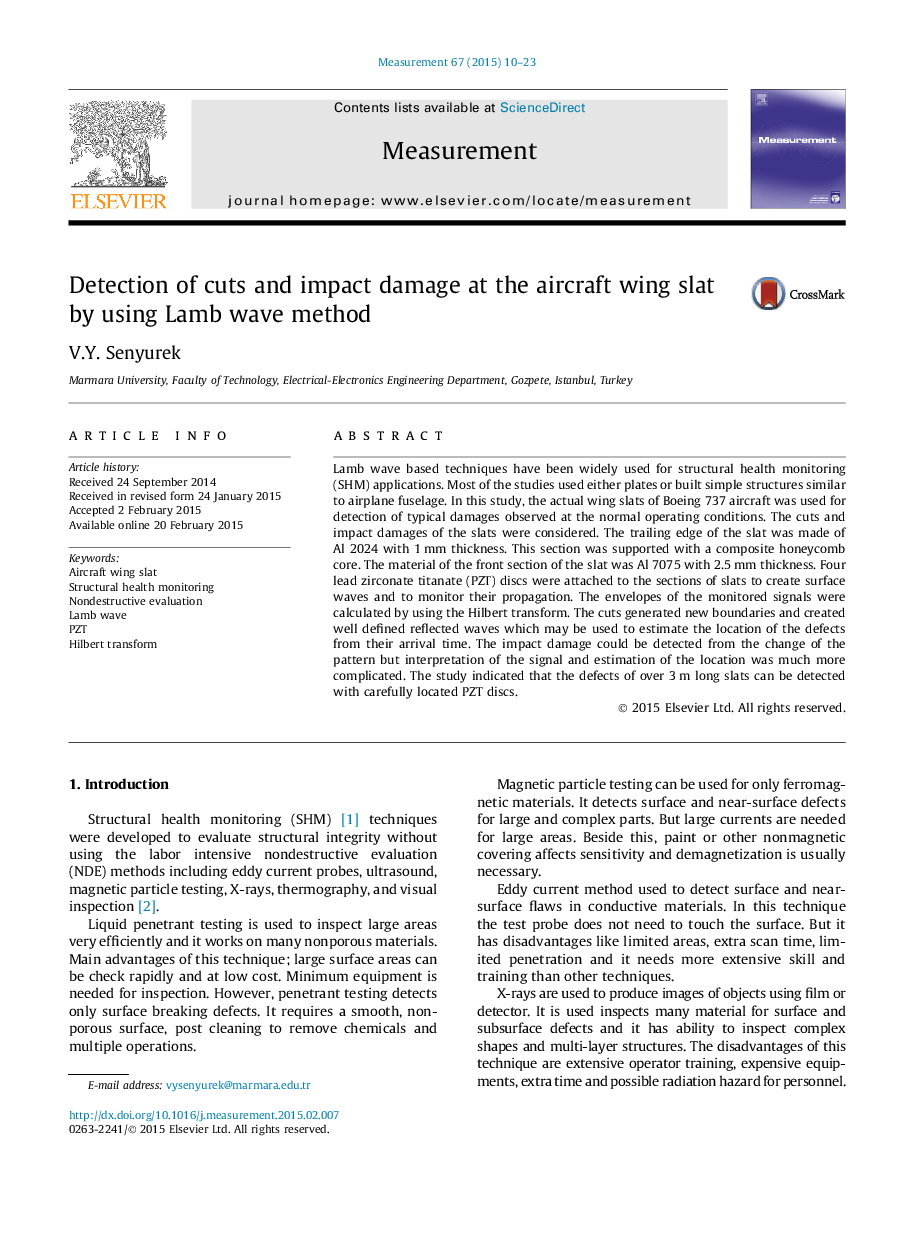| Article ID | Journal | Published Year | Pages | File Type |
|---|---|---|---|---|
| 731024 | Measurement | 2015 | 14 Pages |
Lamb wave based techniques have been widely used for structural health monitoring (SHM) applications. Most of the studies used either plates or built simple structures similar to airplane fuselage. In this study, the actual wing slats of Boeing 737 aircraft was used for detection of typical damages observed at the normal operating conditions. The cuts and impact damages of the slats were considered. The trailing edge of the slat was made of Al 2024 with 1 mm thickness. This section was supported with a composite honeycomb core. The material of the front section of the slat was Al 7075 with 2.5 mm thickness. Four lead zirconate titanate (PZT) discs were attached to the sections of slats to create surface waves and to monitor their propagation. The envelopes of the monitored signals were calculated by using the Hilbert transform. The cuts generated new boundaries and created well defined reflected waves which may be used to estimate the location of the defects from their arrival time. The impact damage could be detected from the change of the pattern but interpretation of the signal and estimation of the location was much more complicated. The study indicated that the defects of over 3 m long slats can be detected with carefully located PZT discs.
